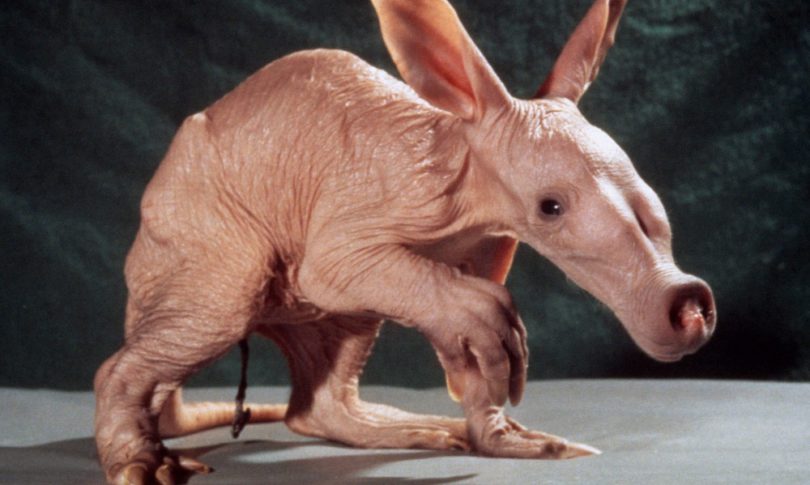The mammal known as the aardvark resembles a creature assembled from various animal parts. Aardvarks have ears resembling rabbits, a kangaroo tail, and a long snout that terminates in a pig-like nose. However, it has no near kin to any of those creatures. They are the only species of the Tubulidentata order that are still alive. They go by the names antbears and earth pigs as well.
Key Facts
Name & Location
- Because it digs tunnels to live in, the term “aardvark” is derived from the Afrikaans for “earth pig” or “ground pig.”
- Except for primarily rocky areas, it may be found throughout the African continent.
- It is the only surviving member of the Orycteropus in the order Tubulidentata, comprised of animals with teeth resembling tubules (referring to its burrowing feet).
- It can be determined that cousins of aardvarks first appeared during the Paleocene period.
- It closely relates to elephant shrews, golden moles, and tenrecs.
- South American anteaters and pigs are not their near relatives.
Physical Appearance
- Even though it is not closely related to the pig, the aardvark resembles the animal.
- It has a thick body with rough hairs on it.
- Its limbs are four.
- It has shorter front legs than back legs.
- Its front feet have four toes, and its back feet have five.
- Their feet have a spade-like design.
- Its feet have hoof-like claws for nails.
- Their steel-like claws can rip through hard earth and termite mounds.
- It has a light yellowish gray tone that dirt stains to a reddish-brown hue.
- It looks for food with the help of its large nose.
- They have unusually movable snout tips.
- It has a thick tail at the beginning and gets thinner as it gets closer to the end.
- It has ears that resemble those of a rabbit.
- Typically, they weigh 130 to 180 pounds.
- Aardvarks generally range in length from 105 to 130 cm.
- They have long, clingy tongues that may reach a length of 30 cm.
- They can seal their noses to keep out debris like ants and dust.
- They have teeth in the shape of tubules since they belong to the Tubulidentata order.
- Aardvarks have a weak vision but excellent hearing and smell capabilities.
Habitat
- Grasslands, wooded areas, and savannas are good aardvark habitats.
- They don’t reside in marshes or rough terrain where digging burrows is difficult.
- Aardvarks spend the day in their burrows to escape the sun’s heat.
- Termites and ants must proliferate across their area (their food).
Ecology
- When kept in captivity, aardvarks can live up to 23 years.
- Aardvarks are a common food source for many animals, including lions, leopards, cheetahs, pythons, and hyenas.
- Aardvarks either dig quickly or run zigzag to escape their predators.
- They carve 13-meter-long tunnels with many entrances.
- Although they move slowly in other areas, they are swift to dig their burrows.
- They switch burrows often. Lions, hyenas, wild dogs, warthogs, and pythons make their former burrow their home.
- According to how they are used, their burrows may be divided into three categories: foraging, resting or sanctuary from predators, and permanent habitation.
- They are nocturnal and move up to 16 kilometers per night to seek food.
- To find food, it utilizes its nose and ears.
- They consume nothing except termites and ants.
- However, the only fruit they can eat is aardvark cucumber.
- Although termites and ants sting, aardvarks are protected by their hard skin.
- Aardvarks don’t often produce much noise unless terrifying; when it’s scared, they let out a piercing scream.
Reproduction
- Aardvarks are solitary animals that only form pairs for mating.
- An aardvark’s gestation period lasts seven months.
- Aardvark cub refers to a young animal.
- At six months, a cub is old enough to excavate burrows.
- The mother and youngster remain together until the following mating season.
- A juvenile aardvark must wait two years to reach sexual maturity.
Fun Facts
- The first word in the English lexicon is an aardvark.
- Aardvarks are digitigrades, meaning they walk on their toes rather than on their feet soles.
- An aardvark squats while it is standing on its soles.
- They may consume 50,000–60,000 ants and termites in a single night.
- Aardvarks can swim well.
- The IUCN lists aardvarks as least worried, indicating their steady population.
- In 1869, the London Zoo became the first zoo to keep an aardvark in captivity.
- Because of how diligently it hunts for food, the aardvark is revered in African mythology.
Aardvarks are not in danger and are ranked as having the least concern by the IUCN. Even though the aardvark’s overall number is unknown, and it appears to be declining in many parts of Africa owing to population increase and hunting, They are the only species still in existence in the Tubulidentata order as a result.

